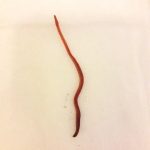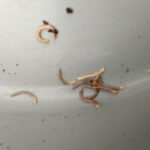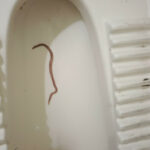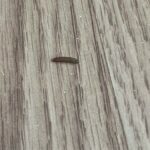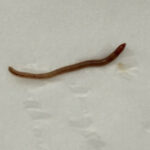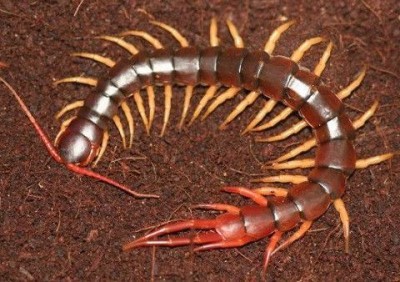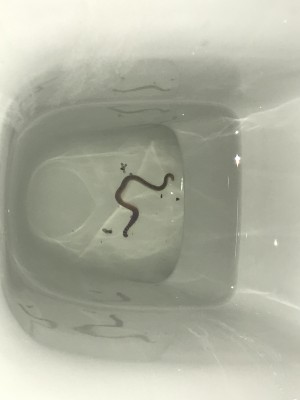
“May I ask what these are?” asks this reader about the black worms, as well as the single, beige, worm-like creature, pictured below. “Are they all the same? Location: Philippines.” Well, we have to say that the photos are quite blurry, especially the second one of the light brown worm. We can’t make out anything other than its color and general shape. For that reason, we have to say that we will unfortunately not be able to identify these creatures with 100% certainty or accuracy. Of course, we can still try our best to provide an educated guess, though this will also be based on very little as we were provided no context other than that our reader is based in the Philippines.
Assuming these worms were found inside our reader’s home, the most typical thin, black worms people found in homes are either horsehair worms or earthworms. Horsehair worms are parasites that infect insects and crustaceans, but not humans. They are marine worms, but can survive on land. The process by which they mature is fascinating, though somewhat tragic. Eggs are laid in a body of water. Once they hatch, the larva swims inside the mouth of an insect drinking that water and starts its maturation inside the body of the insect, feeding off the nutrients it ingests, like all internal parasite (endoparasites) do. Once it has fully matured into a worm, it waits until an insect is at another body of water before bursting out of the insect’s body, killing it in the process. Then, it goes in search of a mate to begin the process all over again.
Earthworms are harmless benefactors of the environment. They live underground, feeding on decomposing organic matter, which they return to the earth as nutrient-rich droppings that fertilize the soil. People sometimes find them inside their homes if there is a leak inside the piping somewhere underground, which a professional would have to inspect and fix. Signs of a leak are most noticeable in a bathroom, and include: changes in the water’s color, inconsistencies in water pressure and/or temperature, and foul-smelling or -tasting water.
The most common beige worms people find in their homes are insect larvae, though this worm does not look like one: its body is too long and stringy. It really does not looks like a solid body at all, or any worm we have seen. Instead, we would propose that it could be some kind of secretion from a worm or insect, or perhaps a strange fungus growing in the home. We are not experts on fungi, so our reader would have to seek the opinion of someone else on that front.
To conclude, we are not sure what our reader found, given the blurry photos and lack of context. If there are any universities with entomology departments near our reader, she can always take samples of the worms to them and see if they might help her identify them. We wish our reader the very best!
All About Worms is always free, always reader-supported. Your tips via CashApp, Venmo, or Paypal are appreciated! Receipts will come from ISIPP Publishing.
You might also find these guys interesting!





